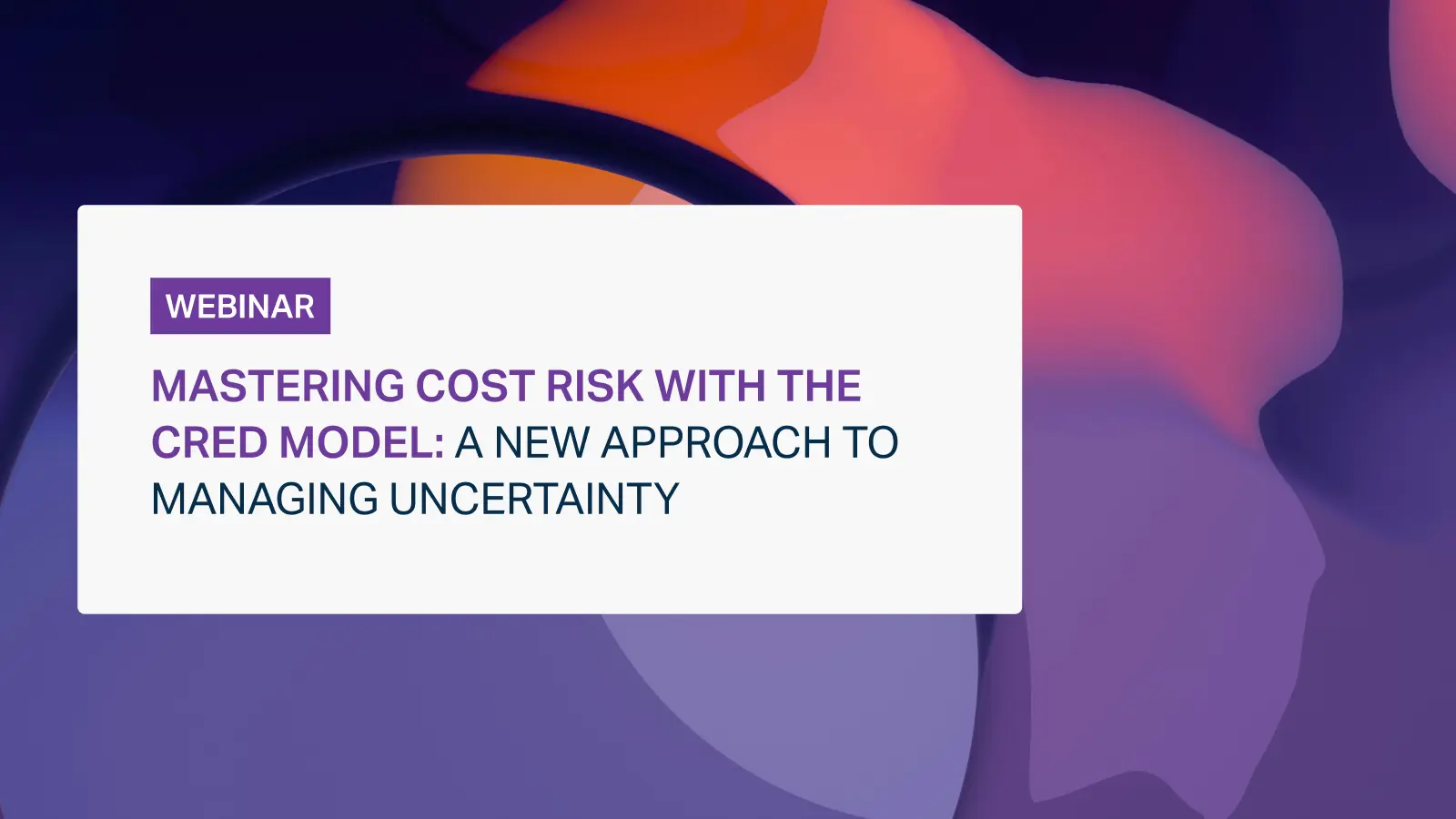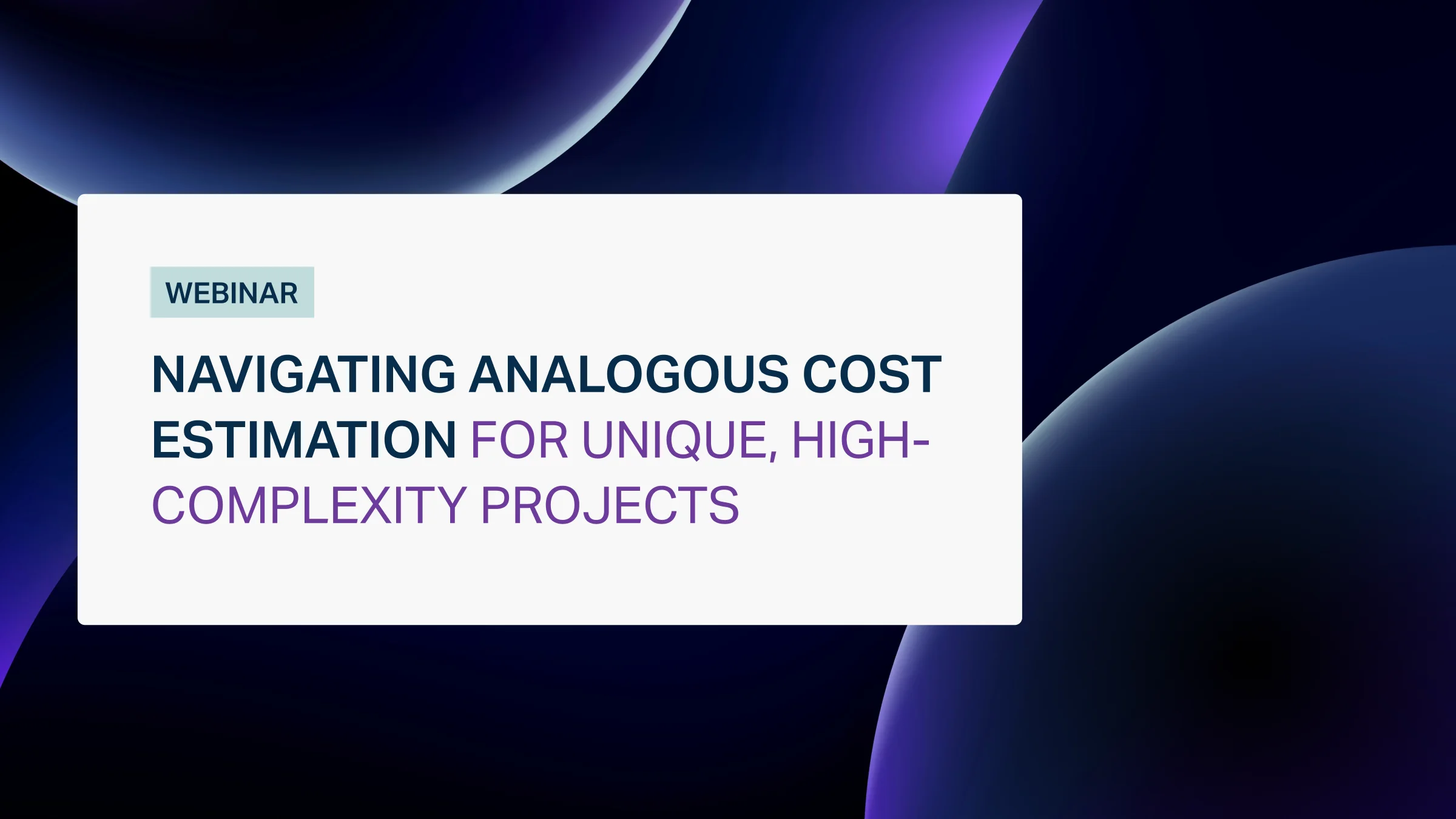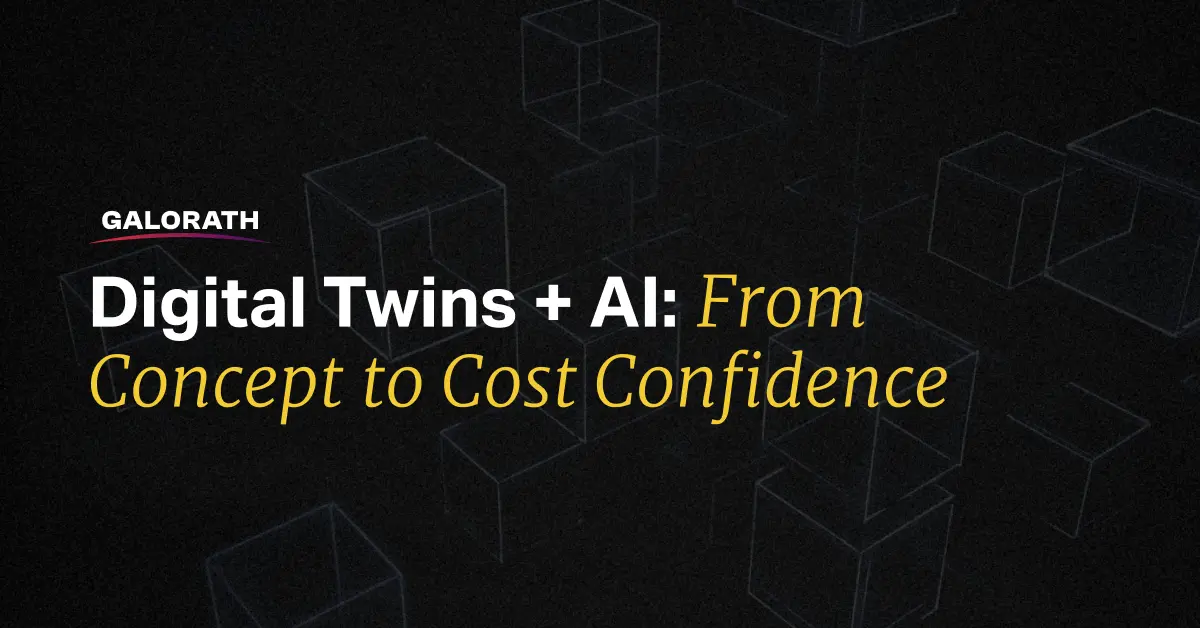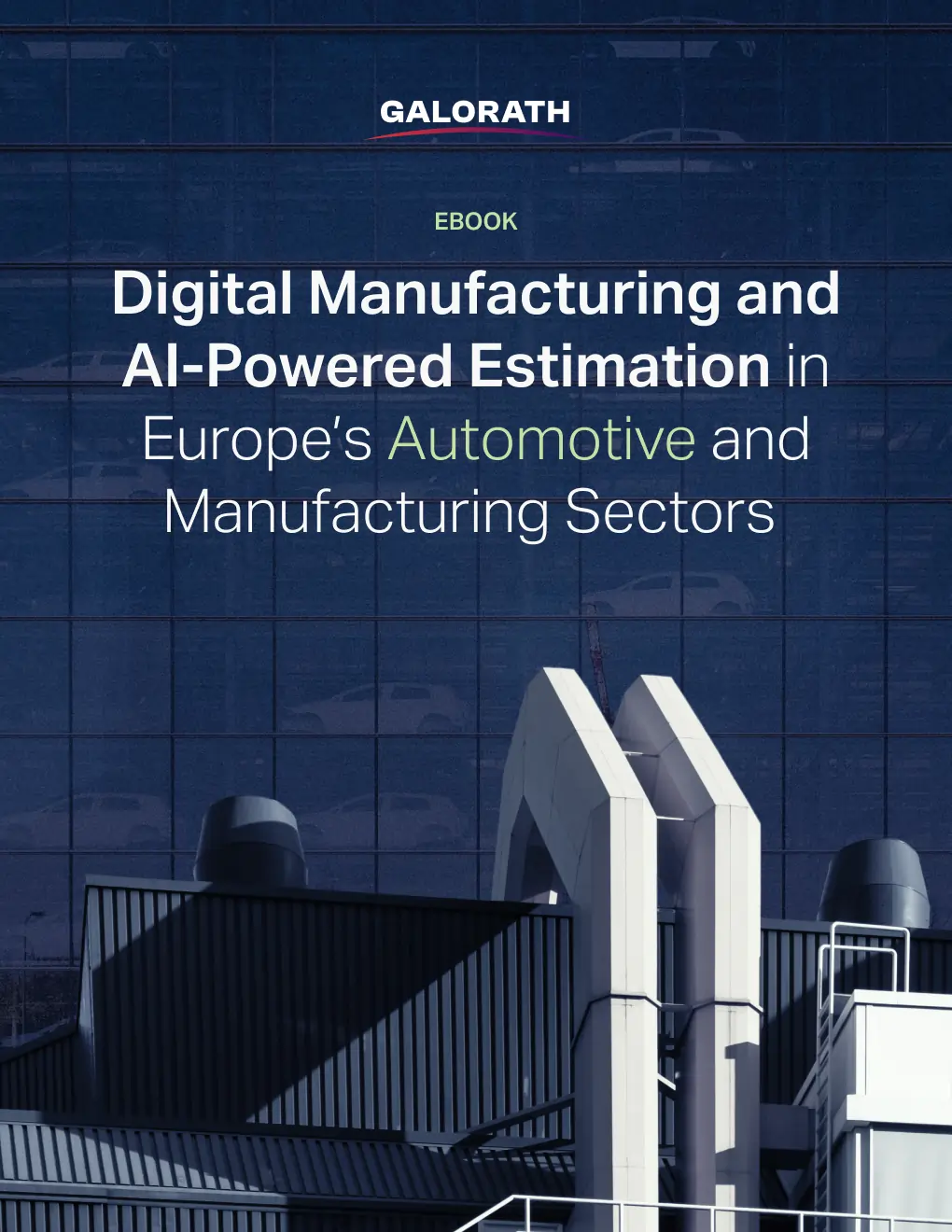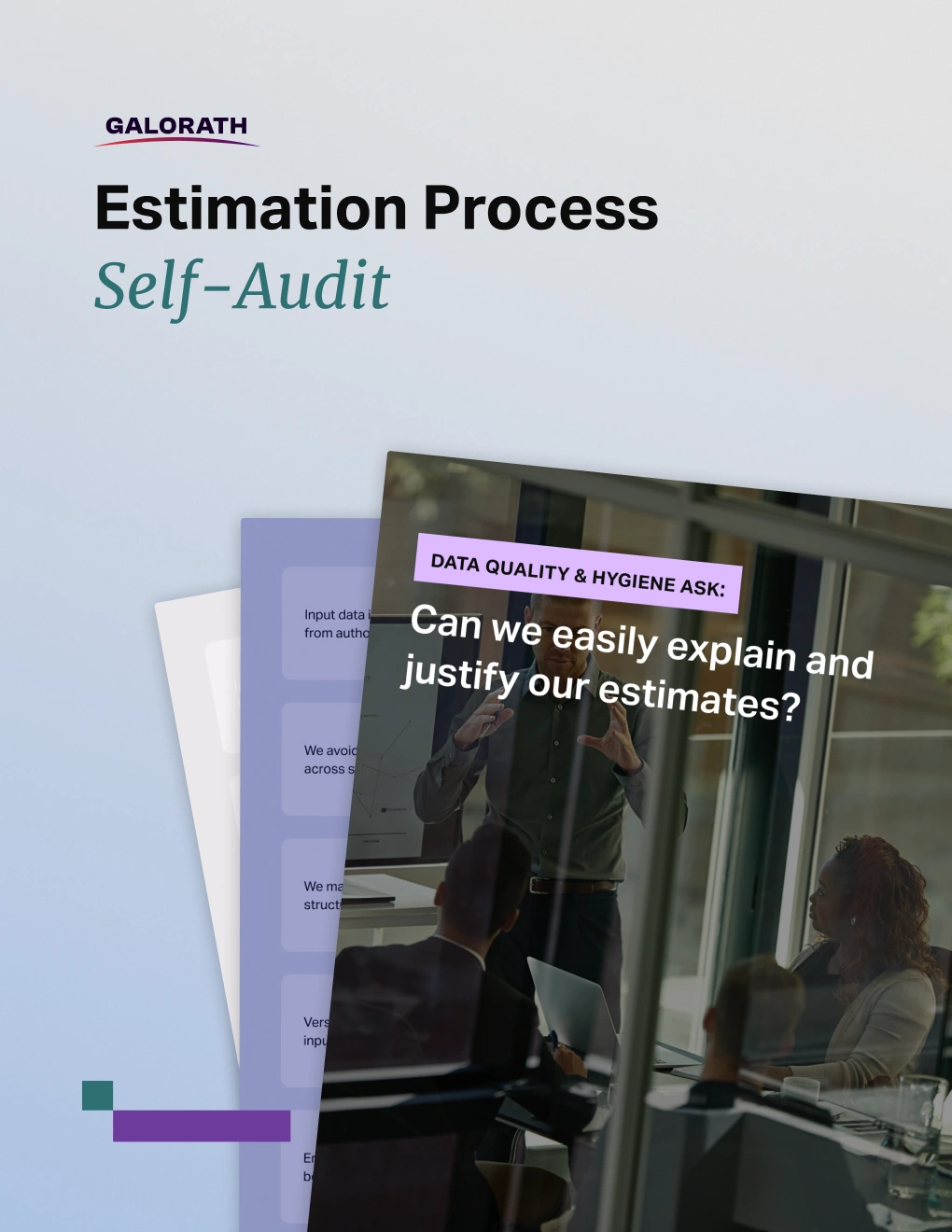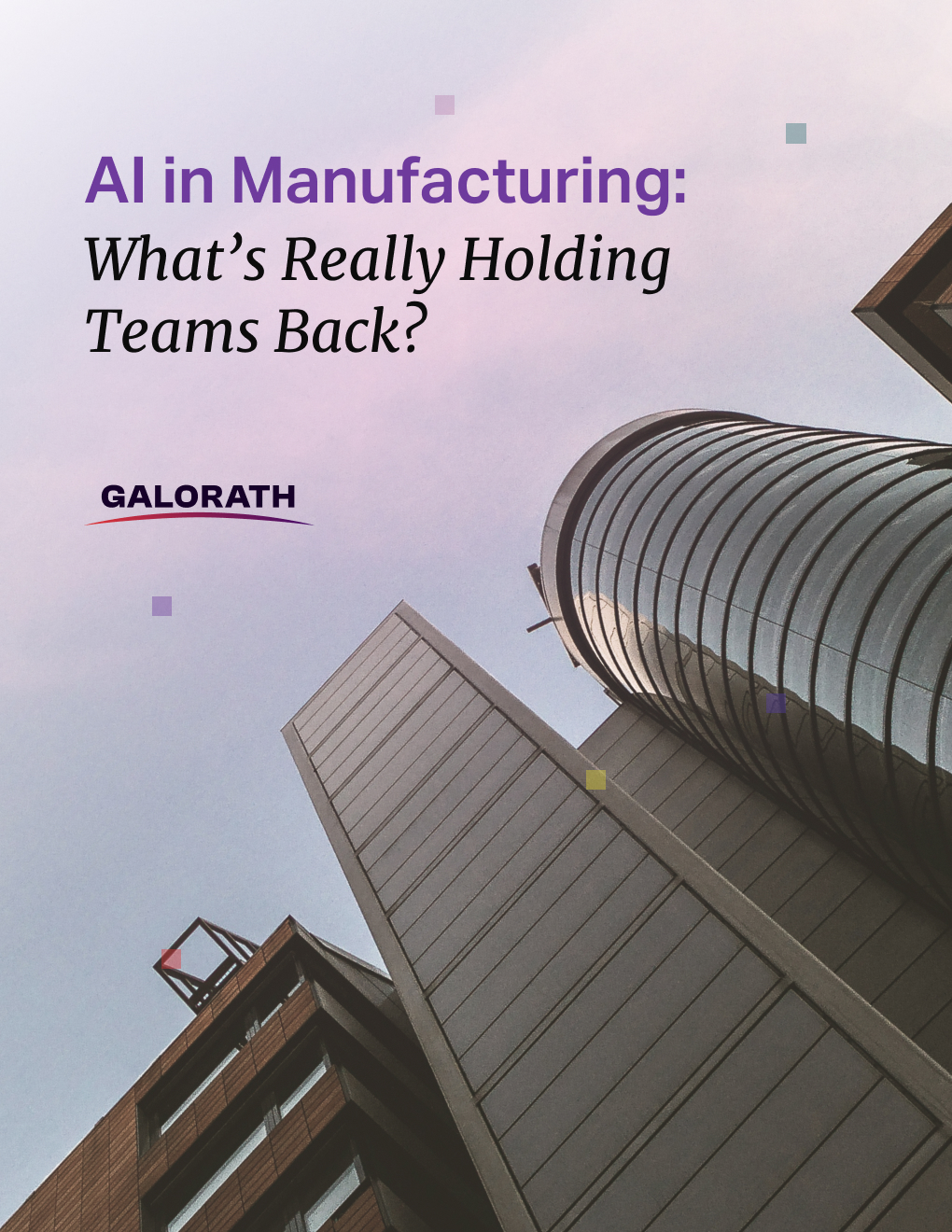Mastering Cost Risk with the CRED Model: A New Approach to Managing Uncertainty
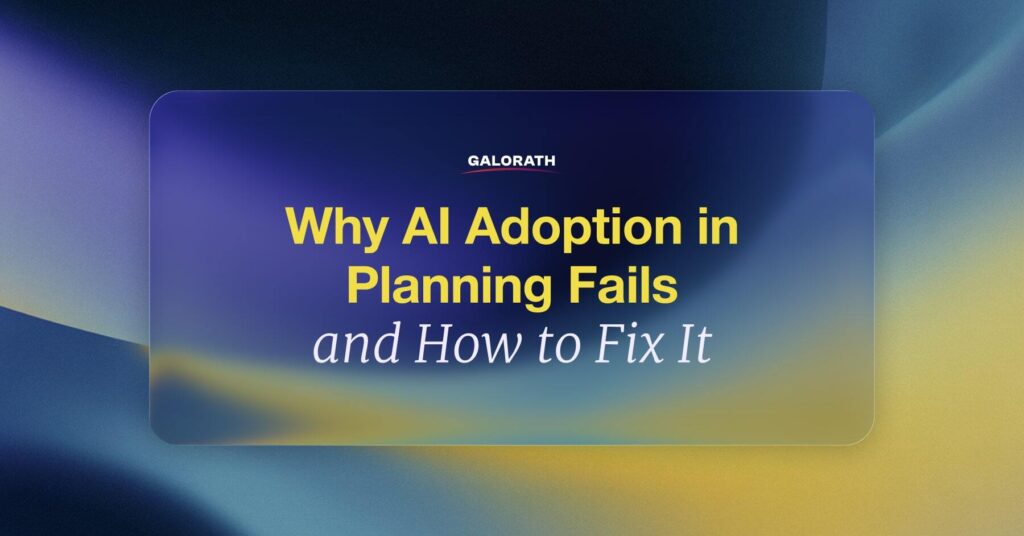
Table of Contents
Artificial intelligence has made real progress across technical disciplines. Design engineers are applying AI to generate models. Supply chain teams are using predictive tools to anticipate delays. Finance departments are leveraging AI to detect fraud, optimize capital spend, and forecast resource needs.
In estimation and project planning, however, that progress has not translated into consistent adoption. While many teams are evaluating AI tools, few have integrated them into their day-to-day workflows, where they can make a measurable difference.
Technology is not the problem. What is missing is structure, ownership, and operational relevance. In many organizations, AI is not failing; it’s floating. Disconnected from core planning systems, it exists on the sidelines rather than where critical decisions happen.
Understanding the Execution Gap
Engineering, sourcing, and finance professionals are under pressure to estimate earlier, plan more accurately, and make tradeoffs with less room for error. This is especially true in sectors with long lead times and costly consequences, where an incorrect assumption early in a project can result in budget overruns or missed delivery milestones.
AI can help. Cost modeling, risk simulation, quote validation, and resource forecasting are all areas where AI models can support better outcomes. However, in practice, most teams are not yet there.
According to Galorath’s 2025 Industry Report on Cost, Schedule, and Risk, AI adoption remains limited across the core disciplines responsible for planning and estimation.
- 76% of cost engineers said AI is not used in their workflows
- Only 4% reported high levels of automation in cost modeling
- 63% of organizations have not adopted AI for any primary planning activity
These gaps are not rooted in technical limitations. They are operational. Organizations have not defined where AI fits, how it integrates into workflows, or who is responsible for its success.
Four Barriers to Adoption
Across interviews with cost analysts, sourcing leads, and project managers, four common challenges emerged:
1. Tools without context
AI models are often introduced as outputs, not as part of the process. A cost engineer may receive an estimate without knowing the source of the inputs. A sourcing lead may see an optimized bid but cannot explain the logic behind it. When tools lack transparency, confidence breaks down.
2. Lack of traceability
Many AI solutions operate as black boxes. Teams are expected to act on results without understanding the sources or the efforts that generated them. This becomes a liability in cross-functional reviews, where decisions must be justified and auditable.
3. Fragmented ownership
Isolating AI development within innovation or IT groups disconnects it from the practical needs of planners and estimators. Without early involvement from end users, tools feel imposed rather than built to serve.
4. Poor integration with decisions
AI outputs are often disconnected from the tools and processes that drive decision-making. If a model result arrives in a separate system, it adds friction and reduces the likelihood of adoption.
What Real Adoption Looks Like
In contrast, teams that have successfully adopted AI share several characteristics. They start with well-defined problems. They involve users in model development. They measure impact with the same discipline used to evaluate any other investment in planning.
Here are three examples:
- A hardware estimation team uses AI to generate initial cost models based on design specifications. This provides a consistent baseline for early-phase planning, reducing the time spent building estimates from scratch.
- A defense procurement team leverages AI to assess supplier quotes. The model flags high-risk line items based on historical and parametric data. While buyers still own the decision, the procurement team has virtually instant access to actionable insights that would take days to surface manually.
- An engineering and finance group uses AI to simulate staffing scenarios and their effect on schedule and cost. These simulations help the team identify the most efficient resource strategy before submitting proposals.
In each of these cases, the AI-assisted cost model is integrated into the team’s workflow, rather than added as an extra step. The outputs are traceable, the logic is explainable, and adoption is reinforced by how well the model improves the decision, rather than by usage frequency.
From Evaluation to Execution
AI adoption in planning does not require an enterprise transformation. But it does require focus and clear accountability. Based on observed best practices, four actions can accelerate adoption:
1. Define a narrow use case
Choose a problem with a clear scope and measurable outcomes. Focus areas might include improving the accuracy of early-phase estimates, reducing bid cycle times, or identifying sourcing risks earlier in the process.
2. Involve the people who will use the output
Adoption depends on relevance. Estimators, planners, and sourcing professionals should help shape the model, test assumptions, and validate results.
3. Prioritize transparency
Choose solutions that allow users to see assumptions, adjust inputs, and explain outputs to others. This is not just a feature—it is a requirement for cross-functional planning and review.
4. Track business outcomes, not usage
Effective success measurements should focus on reduced rework, improved cycle times, fewer estimate revisions, or stronger alignment between engineering and procurement, rather than on the frequency of usage.
A Leadership Imperative
AI adoption is not a tooling issue. It is a leadership issue. Teams need more than access to models. They require direction, structure, and support to utilize those models and make informed decisions effectively. This means investing in training, aligning incentives with outcomes, and holding teams accountable for improving their planning processes, not just experimenting with new technology.
Progress will not come from exploring what AI can do; it will come from exploring what AI can do. It will come from building it into the work that already matters.
Teams that focus on execution, ownership, and transparency will realize the value first. Those who delay will continue to miss the opportunity right in front of them.
10-Step Estimation Process Checklist
View our 10 Step Estimating Process Checklist. This checklist should be tuned to the individual company’s needs and suggestions.
Estimating Total Cost of Ownership (TCO)
Find out how you can use Total Cost of Ownership (TCO) model to create an estimate which includes all the costs generated over the useful life of a given application.
Should Cost Analysis
Learn how Should-Cost Analysis can identify savings opportunities and drive cost efficiency in procurement and manufacturing processes.
ROM Estimate: The First Step Towards a Detailed Project Plan
Find out what ROM (rough order of magnitude) estimate is and why is it a crucial element of every project planning cycle.
Software Maintenance Cost
Find out why accurate estimation of software maintenance costs is critical to proper project management, and how it can make up to roughly 75% of the TCO.
